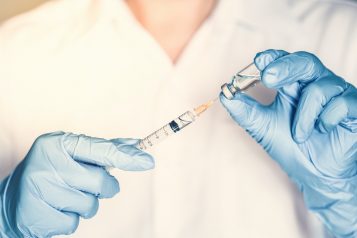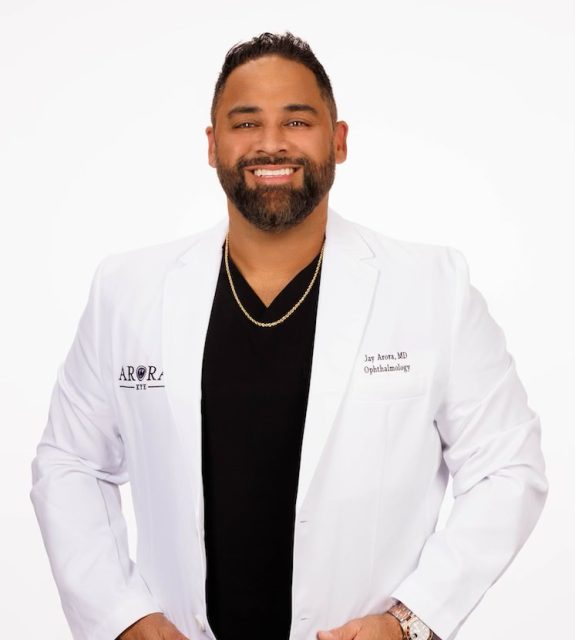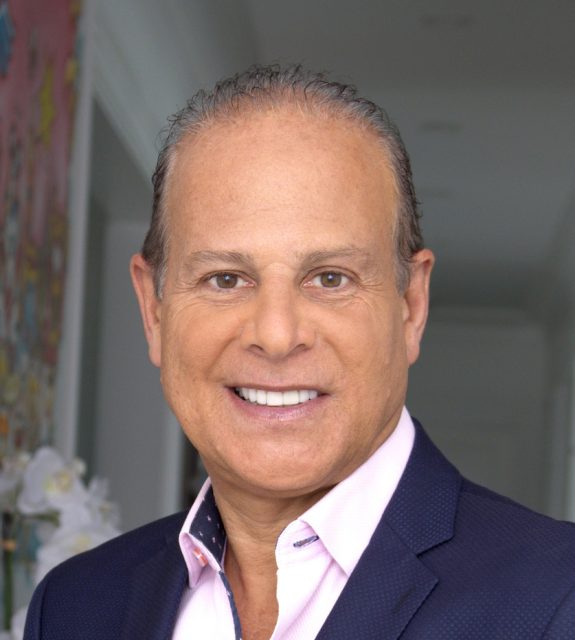Dr. Michele Green is a board-certified dermatologist. Upper East Side patients and those from the surrounding areas of New York City flock to her practice for a variety of cosmetic dermatology treatments. A graduate from Yale University, with an MD from Mount Sinai Medical School in NYC, Dr. Green treats some of the most discerning, demanding women and men in the world, with issues ranging from premature skin aging to hyperpigmentation, rosacea, acne, and skin cancer.
Skin conditions like Rosacea are not only painful and uncomfortable, it is also unsightly and sometimes hard to conceal when there can be multiple triggers. It is an extremely common skin with 3 million new cases every year. Although there is no cure it is easily treatable with various types of therapies that can be performed by an experienced Dermatologist.
Dr. Green is an expert in Rosacea and one of the best dermatologists in NYC to treat facial rosacea with proper skin care, oral medications and laser treatments.
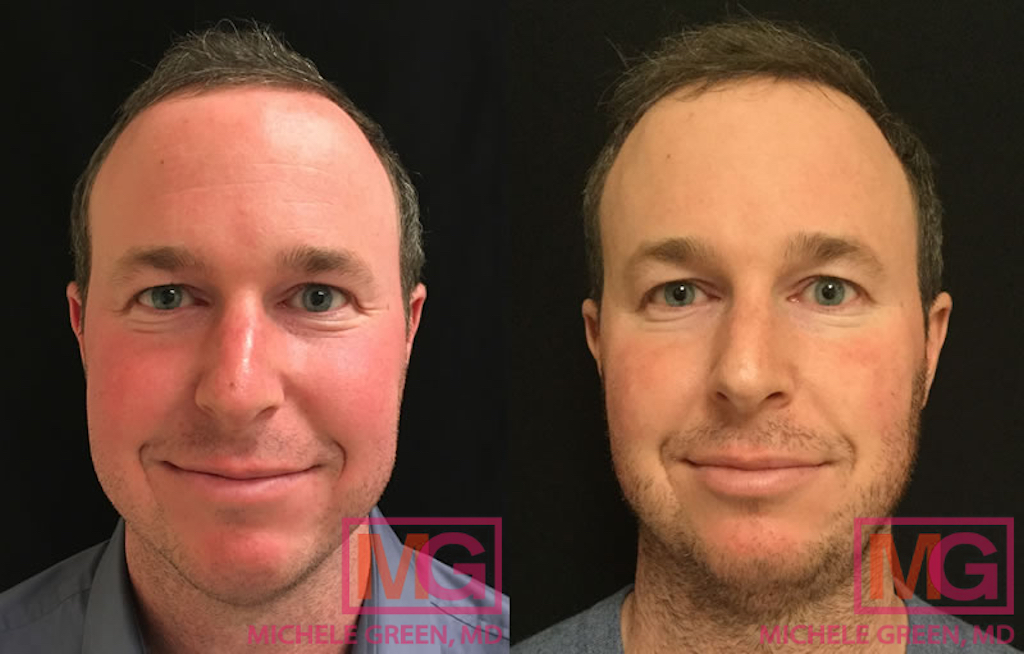 Photo Credit: Dr. Michele Green
Photo Credit: Dr. Michele Green
How to tell if you have rosacea:
“The hallmark of rosacea is persistent redness in the central portion of the face which persists for at least three months,” says Dr. Green.
What are the symptoms of Rosacea?
Facial redness: Where there is persistent redness in the central face, with small blood vessels around the nose and cheeks that swell and become more visible.
Red papule or pustules: The are similar to acne lesions. The lesions can be warm, painful, swell, and exude pus.
Ocular rosacea: Where the eyes are pruritic, dry, irritated, and red, and can be photophobic. Many patients complain of eyelid irritation, also called blepharitis, which can lead to serious vision problems if left untreated.
Rhinophyma: Where facial rosacea gets worse on the nose, causing the nose to swell and become bulbous.
Things to avoid that aggravate Rosacea:
- Stress
- Heat
- Diet such as hot or spicy foods
- Caffeine and caffeinated hot drinks, like coffee
- Smoking
- Exercise such as hot yoga
- Extreme heat or cold
- Steam rooms
- Sun exposure
- Wind exposure
- Alcohol
- Hormonal or endocrine problems such as thyroid diseases or menopause
- Medications which dilate the blood vessels
- Certain skincare or cosmetic products
“It is very important to identify these “triggers” which can exacerbate your rosacea and avoid them to keep your rosacea under control and avoid flares,” says Dr. Green.
The solution?
An in-office treatment of Vbeam laser with Dr. Michele Green can help patients with Rosacea, treat the symptoms and appearance. Laser therapies help to reduce the appearance of blood enlarged blood vessels.
The Vbeam laser is a pulsed dye laser, which utilizes a 595 nm wavelength of intense light. There is a Dynamic Cooling Device (TM) (DCD) which automatically adjusts cooling the skin before emitting the laser pulse, protecting the skin. The DCD is released before the laser beam, which enables these treatments to be painless and prevents post-treatment bruising.
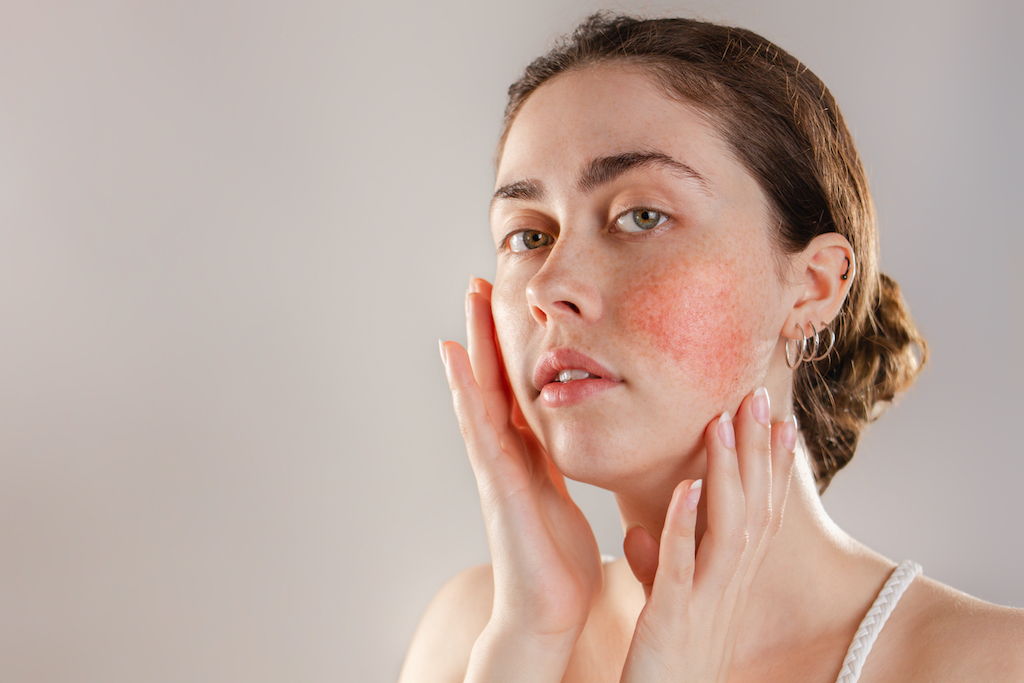 Photo Credit: Shutterstock
Photo Credit: Shutterstock
What is the treatment like?
Dr. Green performs all of the Vbeam laser treatments in the office herself. Although the Vbeam is relatively painless, there are some patients who are sensitive to the laser. In these cases, Dr. Green offers numbing cream for those patients to apply to the treated area for 30 minutes before your Vbeam treatment. Special eyewear is given to the patient to protect your eyes from the laser during your Vbeam treatment. The V-beam laser feels like a rubber band snapping or a stinging against your skin. Some patients have some mild redness, swelling, or warmth, after the treatment. Minor bruising or swelling can occur as well, which generally resolves in one to two days.
Are multiple treatments necessary?
The number of Vbeam treatments depends on the dermatologic condition being addressed, whether you are treating rosacea, leg veins, or stretch marks. Patients with severe rosacea will need more treatments than those with mild conditions. In general, five sessions spaced approximately one month apart are best. Many patients choose to have maintenance sessions scheduled 3 to 6 months apart for ongoing skin radiance.
What is recovery like?
“Since there is no downtime, you can put makeup on, or return to work, without any recovery time. Minor bruising or swelling can occur as well, which generally resolves in one to two days. Patients are urged to wear sunscreen and avoid the direct sunlight, saunas, and tanning salons, both before and after treatment,” says Dr. Green.
There is no known cause for rosacea but the flares can be triggered by diet, environment and stress. There are many treatment options and treatment for rosacea ranges from topical creams, oral antibiotic prescriptions, Hydrafacials, IPL and Vbeam laser treatment. Treatment options can include one or a combination of different treatments depending on the severity of your rosacea. If you have persistent facial redness and think you may have rosacea please visit www.michelegreenmd.com to learn more about treatment options which can help alleviate symptoms and improve your appearance. Persistent rosacea can cause other health-related complications if left untreated. rosacea cannot be cured; therefore, it is important to work with an experienced doctor such as Dr. Green to treat symptoms that can improve your quality of life.
For more information, visit Dr. Michele S. Green's social media:







